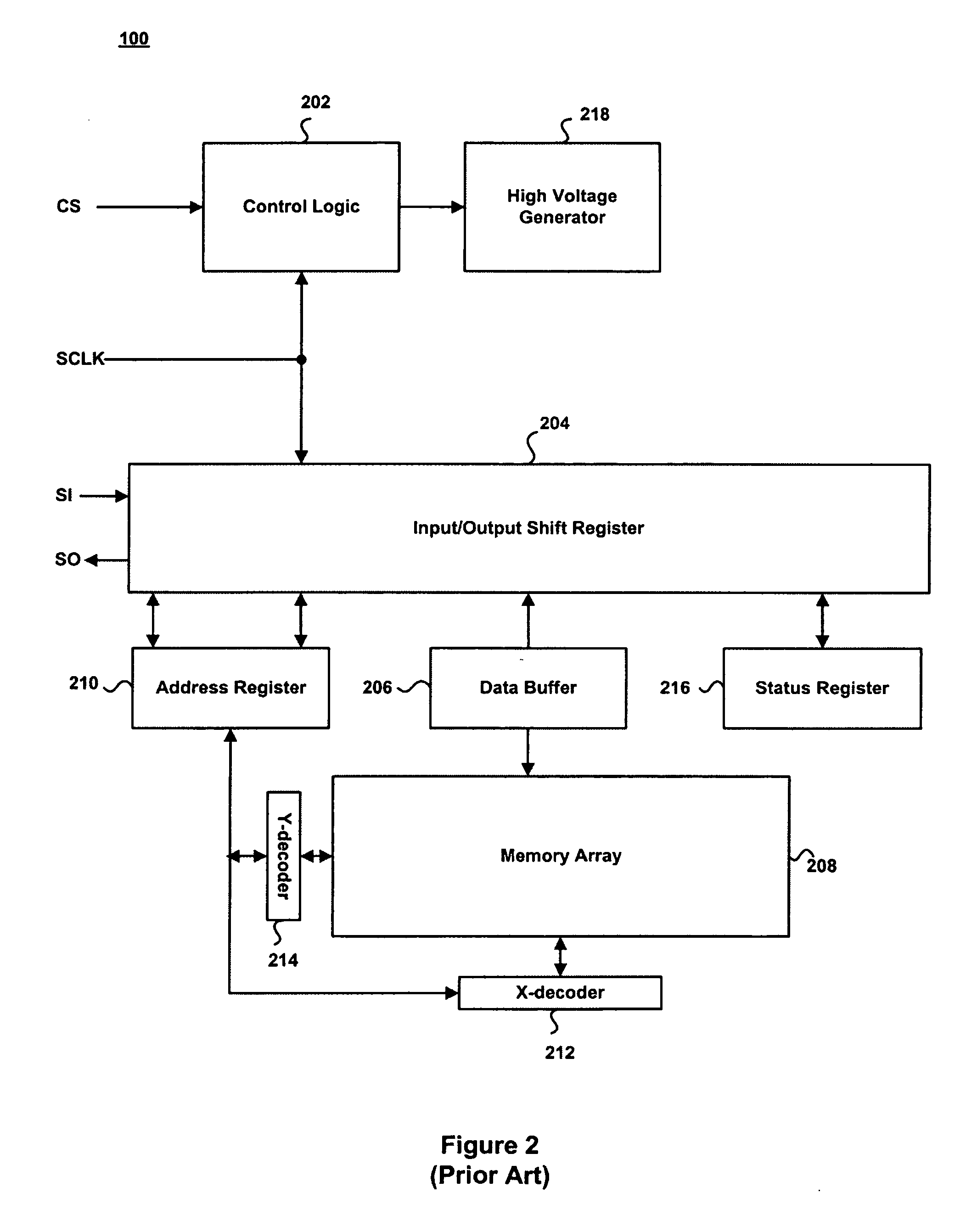Serial peripheral interface memory device with an accelerated parallel mode
a peripheral interface and memory device technology, applied in the field of nonvolatile memory devices, can solve the problems of limited bit-by-bit data transmission, slow parallel transmission between devices, and large amounts of data being transmitted very slowly
- Summary
- Abstract
- Description
- Claims
- Application Information
AI Technical Summary
Benefits of technology
Problems solved by technology
Method used
Image
Examples
Embodiment Construction
[0001] 1. Field of the Invention
[0002] The invention relates to nonvolatile memory devices that utilize a serial peripheral interface (SPI) for the serial transmission of data.
[0003] 2. Background
[0004] A serial peripheral interface (SPI) has been utilized in the past for enabling the serial exchange of data between two devices, one referred to as the master and the other referred to as the slave. Serially exchanging data involves transmitting data between the master and slave devices one bit at a time, and is often used in computer systems for transmitting data between the central processing unit (CPU) and various peripheral devices. In such a case, the CPU acts as the master device and the peripherals are the slave devices. The bit-by-bit transmission of data is limited by the speed of the serial clock rate of the master device, so that if the serial clock rate is low, large amounts of data will be transmitted very slowly.
[0005] Another means of transmitting data is through a ...
PUM
 Login to View More
Login to View More Abstract
Description
Claims
Application Information
 Login to View More
Login to View More - R&D
- Intellectual Property
- Life Sciences
- Materials
- Tech Scout
- Unparalleled Data Quality
- Higher Quality Content
- 60% Fewer Hallucinations
Browse by: Latest US Patents, China's latest patents, Technical Efficacy Thesaurus, Application Domain, Technology Topic, Popular Technical Reports.
© 2025 PatSnap. All rights reserved.Legal|Privacy policy|Modern Slavery Act Transparency Statement|Sitemap|About US| Contact US: help@patsnap.com



